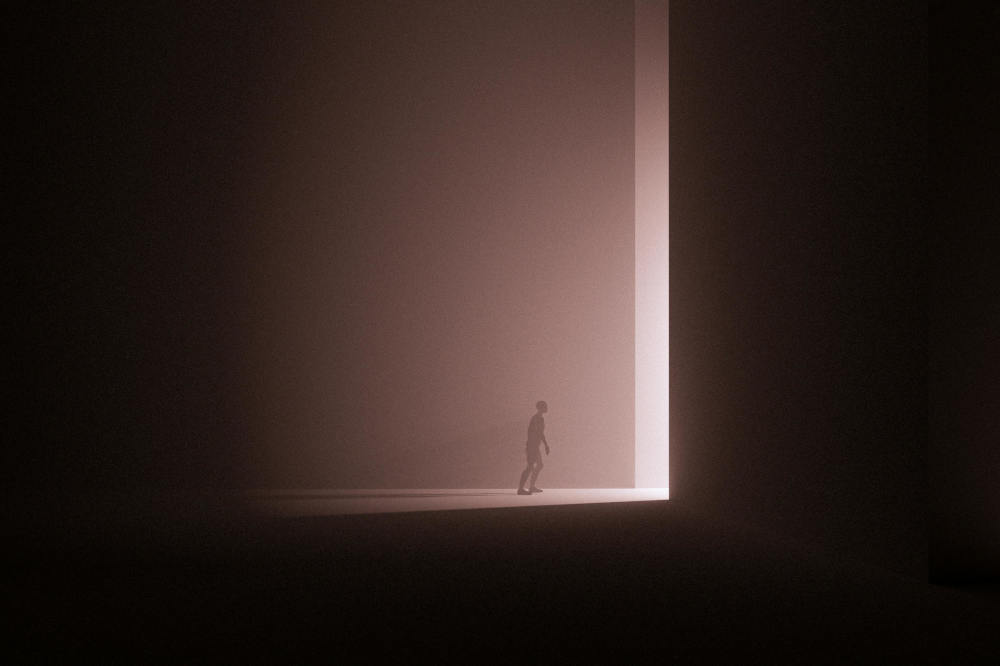
For most of human history, we believed the universe was all there is. Everything—stars, planets, galaxies—was part of a single, unified cosmos. But over the past few decades, that idea has been challenged in profound ways. A new possibility has emerged, one that seems pulled straight from science fiction but is grounded in cutting-edge physics: the multiverse.
More and more scientists are considering the multiverse as not just a theoretical possibility, but a genuine feature of reality. From quantum mechanics to cosmic inflation to string theory, multiple lines of research point to the same stunning idea: our universe may be one of countless others.
So, what exactly is the multiverse? And why are scientists starting to believe it might be real?
Panaprium is independent and reader supported. If you buy something through our link, we may earn a commission. If you can, please support us on a monthly basis. It takes less than a minute to set up, and you will be making a big impact every single month. Thank you!
What Is the Multiverse?
The multiverse refers to the idea that our universe is just one of many—perhaps an infinite number—of universes that exist in a vast, possibly eternal “megaverse.” These other universes may have different laws of physics, different forms of matter, or even completely different dimensions of space and time.
The concept may sound like fantasy, but it arises naturally from several well-established scientific theories. It’s not just a wild idea; it’s a possible consequence of the way our universe actually works.
Clues From Cosmic Inflation
One of the strongest scientific arguments for the multiverse comes from a theory called cosmic inflation.
Right after the Big Bang, our universe expanded faster than the speed of light for a brief moment—this is known as inflation. The theory of inflation explains why the universe looks so uniform and smooth on large scales, and it's supported by detailed measurements of the cosmic microwave background radiation (CMB), the afterglow of the Big Bang.
But here’s the twist: according to some models, inflation didn't happen everywhere at once. Instead, it happened in patches, with different regions stopping their inflation at different times. Each region that stops inflating becomes its own "bubble universe," while inflation continues elsewhere, forever spawning new bubbles.
This process is called eternal inflation, and it leads directly to the idea of a multiverse filled with bubble universes—each potentially with its own laws of nature.
The Quantum Multiverse
Quantum physics also offers a compelling reason to believe in the multiverse. In the strange world of subatomic particles, events don’t follow deterministic rules. Instead, they’re governed by probabilities.
One interpretation of quantum mechanics, known as the Many-Worlds Interpretation, suggests that every time a quantum event occurs, the universe splits. Each possible outcome happens—but in a different, parallel universe. This means that every decision you make, every coin you flip, and every particle interaction spawns new branches of reality.
Under this view, there are infinite parallel versions of our world where every possible outcome has occurred. It may sound bizarre, but the Many-Worlds Interpretation is considered seriously by many physicists because it offers a mathematically consistent way to understand quantum mechanics without collapsing wave functions or introducing extra rules.
String Theory and the Landscape of Universes
String theory, another major framework in theoretical physics, provides yet another route to the multiverse.
At its core, string theory attempts to unify all the fundamental forces of nature—including gravity—into a single theory. It suggests that the basic building blocks of reality are not particles but tiny, vibrating strings. These strings can only vibrate properly in a universe with extra dimensions, typically 10 or 11 in total.
The challenge is that there are a vast number of ways these extra dimensions can be shaped or compactified. Each different shape leads to a different version of physical reality. Some versions have stable particles like protons and electrons. Others might have entirely alien forms of matter.
This collection of possible universes is called the string theory landscape, and it’s estimated to contain as many as 10^500 different configurations. That’s a 1 followed by 500 zeros—more possibilities than atoms in the known universe.
If each configuration corresponds to a different universe, then string theory implies an almost unimaginably vast multiverse.
Observational Hints (and Limits)
You might be wondering: if these other universes exist, why can’t we see them?
That’s a fair question—and part of the reason why the multiverse remains controversial. These universes might exist beyond our cosmic horizon, the limit of what we can observe. If a universe lies outside the reach of light or any other signal we can detect, it’s effectively invisible to us.
Still, scientists have looked for indirect evidence:
● Cosmic Microwave Background Anomalies
Some researchers have studied the CMB for unusual patterns or “bruises” that could indicate collisions between our universe and another. While no definitive evidence has been found yet, a few anomalies have sparked interest and debate.
● Fine-Tuning of Physical Constants
Our universe appears finely tuned for life. Slight changes in the strength of gravity, electromagnetism, or nuclear forces could make life impossible. In a multiverse, this fine-tuning is explained as a selection effect: we live in a universe suited to life simply because we couldn't exist in one that wasn’t.
This argument, known as the anthropic principle, makes more sense in the context of a multiverse where all possible variations of physics exist somewhere.
Philosophical and Existential Implications
The multiverse isn’t just a scientific idea—it has deep philosophical consequences.
If other versions of you exist in parallel universes, what does that mean for your identity and choices? Are they all equally real? Does your experience still matter?
Many thinkers argue that the multiverse expands our understanding of reality. It suggests that reality isn’t a single thread, but a vast tapestry of possibility. Life, then, becomes not just a rare miracle, but a natural outcome in an unimaginably large sea of worlds.
Others raise concerns. If we can never test the multiverse directly, should it even count as science? Critics argue that a theory must be falsifiable to be scientific. Supporters respond that many accepted theories in science began as speculative, only to be supported later through indirect evidence.
In the end, whether you view the multiverse as science, philosophy, or both, it pushes us to ask deeper questions about existence.
The Multiverse in Popular Culture
It’s no surprise that the multiverse has captured the imagination of writers, artists, and filmmakers. From Marvel’s multiverse saga to indie films like Everything Everywhere All At Once, the idea of parallel realities has become a cultural phenomenon.
While these portrayals are often exaggerated or fantastical, they reflect a real shift in how people are thinking about reality. The multiverse is no longer just a fringe idea—it’s entering the mainstream.
A Scientific Consensus?
So, is there a consensus among scientists that the multiverse is real?
The short answer: not yet. The multiverse is still a topic of intense debate. Some physicists are deeply convinced by the mathematical and theoretical evidence. Others remain skeptical due to the lack of direct observational support.
However, what's undeniable is that many leading theories in modern physics—not just one—point toward the existence of other universes. When so many different paths converge on a single idea, it’s a strong sign that the idea deserves serious attention.
And that’s exactly what’s happening. The multiverse is now a central question in cosmology, quantum physics, and string theory. Research continues, and new insights could bring us closer to understanding whether the multiverse is real in the way gravity or atoms are real.
Conclusion: A Bigger Reality
The multiverse challenges us to rethink everything we thought we knew. It suggests that our universe—vast and magnificent as it is—might be just one piece of a much larger cosmic puzzle.
From inflation to quantum mechanics to string theory, science keeps pulling back the curtain on a reality that’s more complex, more beautiful, and far more mysterious than we ever imagined.
Is the multiverse real? We don’t have all the answers yet. But the evidence from multiple fields makes one thing clear: this is not just speculation anymore. It’s a serious scientific possibility—one that could redefine our place in the cosmos.
And maybe, just maybe, we’re on the edge of discovering that everything we know is only the beginning.
Was this article helpful to you? Please tell us what you liked or didn't like in the comments below.
About the Author: Alex Assoune
What We're Up Against
Multinational corporations overproducing cheap products in the poorest countries.
Huge factories with sweatshop-like conditions underpaying workers.
Media conglomerates promoting unethical, unsustainable products.
Bad actors encouraging overconsumption through oblivious behavior.
- - - -
Thankfully, we've got our supporters, including you.
Panaprium is funded by readers like you who want to join us in our mission to make the world entirely sustainable.
If you can, please support us on a monthly basis. It takes less than a minute to set up, and you will be making a big impact every single month. Thank you.































0 comments